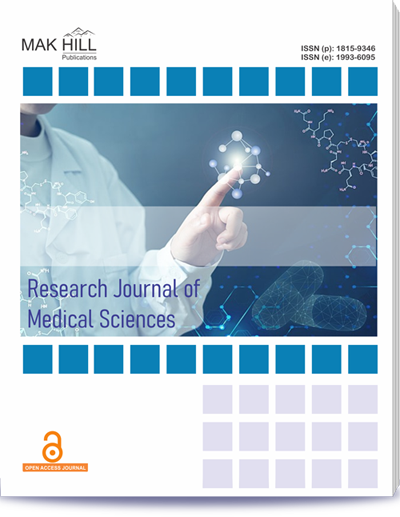
Research Journal of Medical Sciences
ISSN: Online 1993-6095ISSN: Print 1815-9346
Abstract
A non‐communicable disease like diabetes appears to be a cause of morbidity and mortality. Diabetic foot is one of the many serious consequences of diabetes that has received little attention and awareness for many years leading to tissue loss and amputation. This causes an emotional and financial burden on patients. Between September 2020 and August 2022, this study was conducted at a tertiary care hospital in industrial area of pune to evaluate the cost effectiveness of the super oxidized solution (SOS) and povidone‐iodine (PI) in treating diabetic foot ulcers of lower or middle working class. Sixty diabetes patients with lower limb ulcers took part in the study. Group A’s treated with SOS, whereas Group B’s treated with PI. The mean random BSL (blood glucose level) in groups A and B is 254.47 mg dL-1 and 254.96 mg dL-1 in both. HbA1c levels in group A were 8.30% and in B were 8.46%. The most frequent organisms isolated are Staphylococcus aureus and pseudomonas. Wound healing time was considerably shorter (37.45 days) for Group A than group B (46.37 days) and the average duration for achieving a nil growth culture in group A is 15.12 days, whereas 17.58 days in group B. The SOS treatment reduces the duration of hospital stay than the conventional PI treatment, according to the study, since it is less expensive for lower‐and middle‐class patients has moistening properties that promote quick healing and is non‐irritating.
How to cite this article:
Mahendra Wante and Amit Girme. Study of Cost Effective Solution for Healing in Diabetic Foot Ulcer.
DOI: https://doi.org/10.36478/10.59218/makrjms.2023.12.209.213
URL: https://www.makhillpublications.co/view-article/1815-9346/10.59218/makrjms.2023.12.209.213